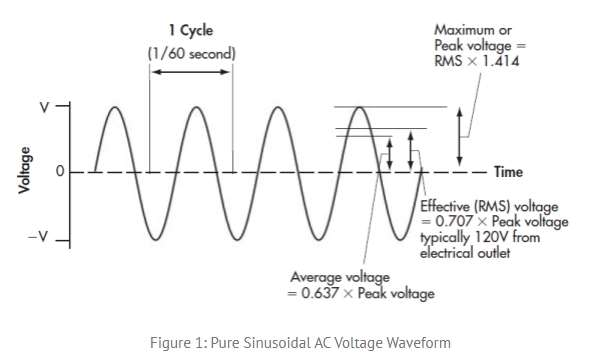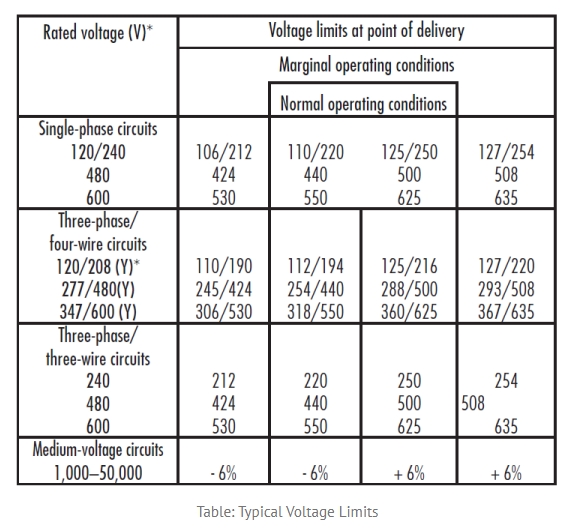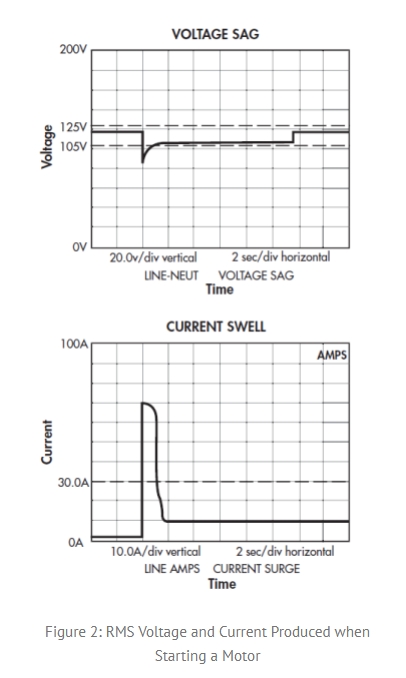
The Institute of Electrical and Electronics Engineers (IEEE) defines power quality as ensuring the electrical powering and grounding of equipment is both compatible and suitable for its operation. This involves achieving compatibility between the electrical system and the equipment it powers, as well as between different devices within the same distribution space. This compatibility concept is known as Electromagnetic Compatibility (EMC), defined by the International Electrotechnical Commission (IEC) as an equipment’s or system’s ability to function satisfactorily in its electromagnetic environment without causing intolerable disturbances to other devices.
The true measure of power quality is how well electrical equipment operates consistently and safely when properly maintained, without negatively impacting the performance of other connected equipment.

Electricity supplied by utilities typically follows a sinusoidal waveform with a frequency of 60 Hz in North America and 50 Hz in other regions, known as the fundamental frequency. Any deviation in this waveform’s magnitude or frequency is termed a power line deviation. While minor deviations are often harmless, significant variations can lead to disturbances affecting equipment performance.
Excessively high or low voltages can lead to equipment wear or damage. To maintain standardization, local utilities establish voltage variation limits at service entrance points. For example, voltage drops should not exceed 5% from the power source to the utilization point and should stay within 3% within any circuit. The allowable variation for higher voltages, generally from 1,000 V to 50,000 V, is typically ±6% at the service entrance, with exceptions for temporary heavy load conditions, such as motor startup.
Utilities cannot guarantee a completely disturbance-free voltage, so additional mitigation measures may be necessary at the point of use for equipment that requires a stable voltage waveform.

Managing electrical power quality is essential, especially for operations involving electronic, control, or life-safety devices. Poor power quality can cause significant operational disruptions across industries, such as:
Power quality issues are often indicative of underlying safety concerns, such as wiring or grounding errors, that require immediate action. Ensuring compatibility between electrical loads and the system is crucial, with regulatory standards and utility procedures available to guide equipment compatibility and performance measures.
Several primary factors contribute to power quality challenges:
Sensitive Electronic Loads: Modern utility systems are designed for general reliability but may struggle to support sensitive electronic devices, which can be affected by power disturbances.
Nearby Disturbance-Producing Equipment: High-power equipment using solid-state switching, arc furnaces, and variable speed drives can generate disturbances impacting nearby sensitive devices.
Supply Sources: Rising energy costs and the integration of new energy sources, including renewable and distributed generation, add complexity and potential power quality issues.
Utilities are responsible for delivering energy up to the service entrance (meter), and the customer is accountable for addressing power quality on their side of the meter. It’s important to pinpoint the source of power quality problems to implement effective solutions.

Studies suggest most power quality issues arise within a facility, although there can be an interplay with supply-side disturbances. Addressing facility-originating power quality problems is often more cost-effective, giving facility managers greater control over their operational processes and the opportunity for cost savings.
Utilities, regulated by specific standards, prioritize continuous service, though certain issues, like weather-related outages, are beyond their control. Generally, most power quality issues fall under the end-user’s responsibility, while utility concerns are tied to supply reliability.
Several misconceptions about power quality persist:
Old Guidelines Are Outdated: Standards like the ITIC curve and FIPS Pub94 are often misinterpreted; these were not intended as modern power quality benchmarks.
Power Factor Correction Isn’t a Universal Solution: Power factor correction, while useful for reducing demand charges, doesn’t solve all power quality issues. Poorly designed power factor correction systems can sometimes exacerbate power quality problems.
Small Neutral-to-Ground Voltages Don’t Indicate Issues: Small voltages between neutral and ground are normal, often requiring no special isolation devices.
Low Earth Resistance Isn’t Mandatory for Electronics: Isolated grounding rods for “low reference earth resistance” are often unnecessary and may not comply with Electrical Codes.
Not All UPS Systems Provide Full Power Quality Protection: Many UPS systems simply provide backup power, lacking features like voltage regulation and surge protection, which are essential for power quality improvement
Investing in power quality prevention strategies is essential for protecting sensitive equipment and ensuring stable, long-term operation. For larger facilities, such as data centers, the associated costs of power quality improvement include site preparation, installation, maintenance, and operational efficiency adjustments. It’s also vital to consider equipment for mitigating power quality issues, like voltage stabilizers, surge protectors, and Active Harmonic Filters (AHFs), especially where sensitive electronics are used.
Active Harmonic Filters (AHFs) offer an effective solution for addressing one of the most common power quality issues: harmonic distortion. Harmonics can interfere with other equipment, reduce energy efficiency, and cause overheating in motors and transformers. AHFs work by dynamically monitoring the electrical system, injecting compensating currents to cancel out these distortions. This minimizes harmonic currents, stabilizes voltage, and ensures smoother, uninterrupted power delivery.
Incorporating AHFs as part of a power quality prevention plan can:
When considering the full costs of power quality prevention, AHFs play a pivotal role in not only maintaining compliance with power quality standards but also safeguarding critical equipment, optimizing energy use, and reducing the need for frequent repairs. For facilities where power quality is essential, the investment in AHFs offers significant long-term savings, reliability, and efficiency, making them a smart addition to any comprehensive power quality strategy.
Subscribe to us to enjoy event prices and get some of the best prices.
 IPv6 network supported
IPv6 network supported

